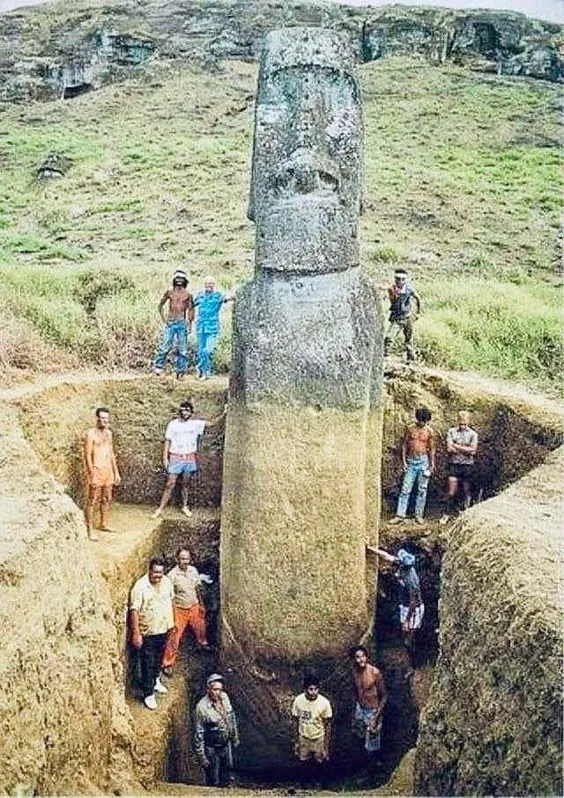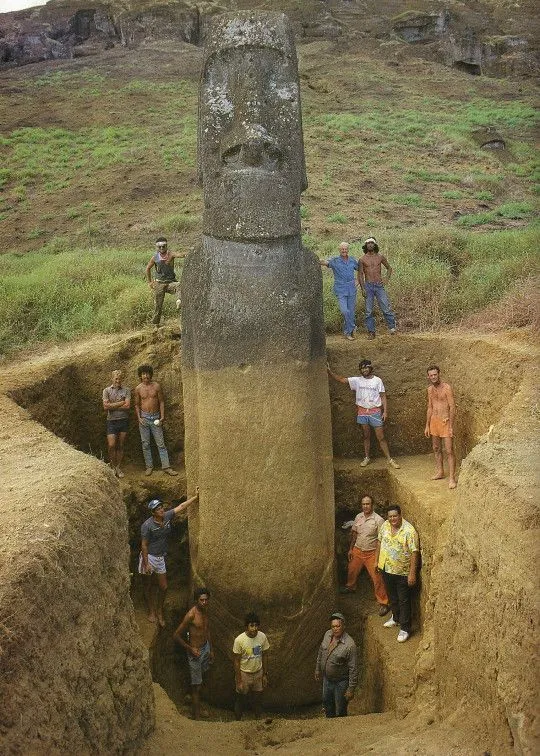Unearthing Giants: The Hidden Mysteries of Easter Island, Göbekli Tepe and Ancient Cataclysms
Archaeologists have long suspected that some of the Easter Island “heads” had a body buried inside them. At the same time, the “giant heads,” several meters high, were thought to be an exception. In fact, if these heads had a body underneath, they would have had to have been real stone giants, at least 20 meters tall, to fit the proportions.

Recent excavations have shown that the “giant heads” of Easter Island are actually buried “stone giants” whose heads emerged from the earth. How did the multi-ton statues end up almost 20 metres deep? If they did it on purpose, how did they manage to do it without breaking them? Easter Island is little more than a small island. Where did they get the manpower to bury dozens and dozens of “stone giants” in the middle of the ocean? Questions without answers.

The Egyptians were capable of doing similar things, but they had the manpower of an empire. What manpower did the inhabitants of tiny Easter Island have? The same thing happened on Nan Madol. A mysterious people built a metropolis on a small island in the middle of the ocean. Of course, it is possible to do so, but only if you have the manpower of an empire. But what manpower did the inhabitants of tiny Easter Island have?
The same thing happened on the border between Turkey and Syria. An entire megalithic complex was completely buried, no one knows by whom or why. This place has been called “Göbekli Tepe”, which means “the hill of the belly”. But beneath this hill lies one of the deepest mysteries of humanity. Recent studies using ground-penetrating radar have revealed that there are dozens of places similar to Göbekli Tepe “buried” many metres below ground level. Was it a civilisation unknown to us that then disappeared due to a natural cataclysm? Or what?

Several scientific articles published in the famous scientific journal Nature tell us that more than 10,000 years ago a series of comets crossed the Earth’s atmosphere, breaking into thousands of pieces. The Earth was hit by a real bombardment of fragments that impacted at least four continents. Nothing was ever the same again. There was a real “Apocalypse” in prehistory, which wiped out an undetermined number of “homo sapiens”. Do the ruins on Easter Island correspond to those of Göbekli Tepe?
…
The article continues in the book:
HOMO RELOADED – The hidden history of the last 75,000 years.
What secrets lie buried beneath the Easter Island “heads”? Recent excavations reveal that these statues, once thought to be just heads, are actually towering stone giants buried deep in the earth. How did the ancient islanders manage to bury these multi-ton figures without modern tools—or a vast workforce? Similar enigmas surround Göbekli Tepe, the buried megalithic complex in Turkey, and the mysterious metropolis of Nan Madol. Could these sites be remnants of an unknown civilization erased by prehistoric cataclysms? Questions remain, but the past seems far more mysterious than we ever imagined.






